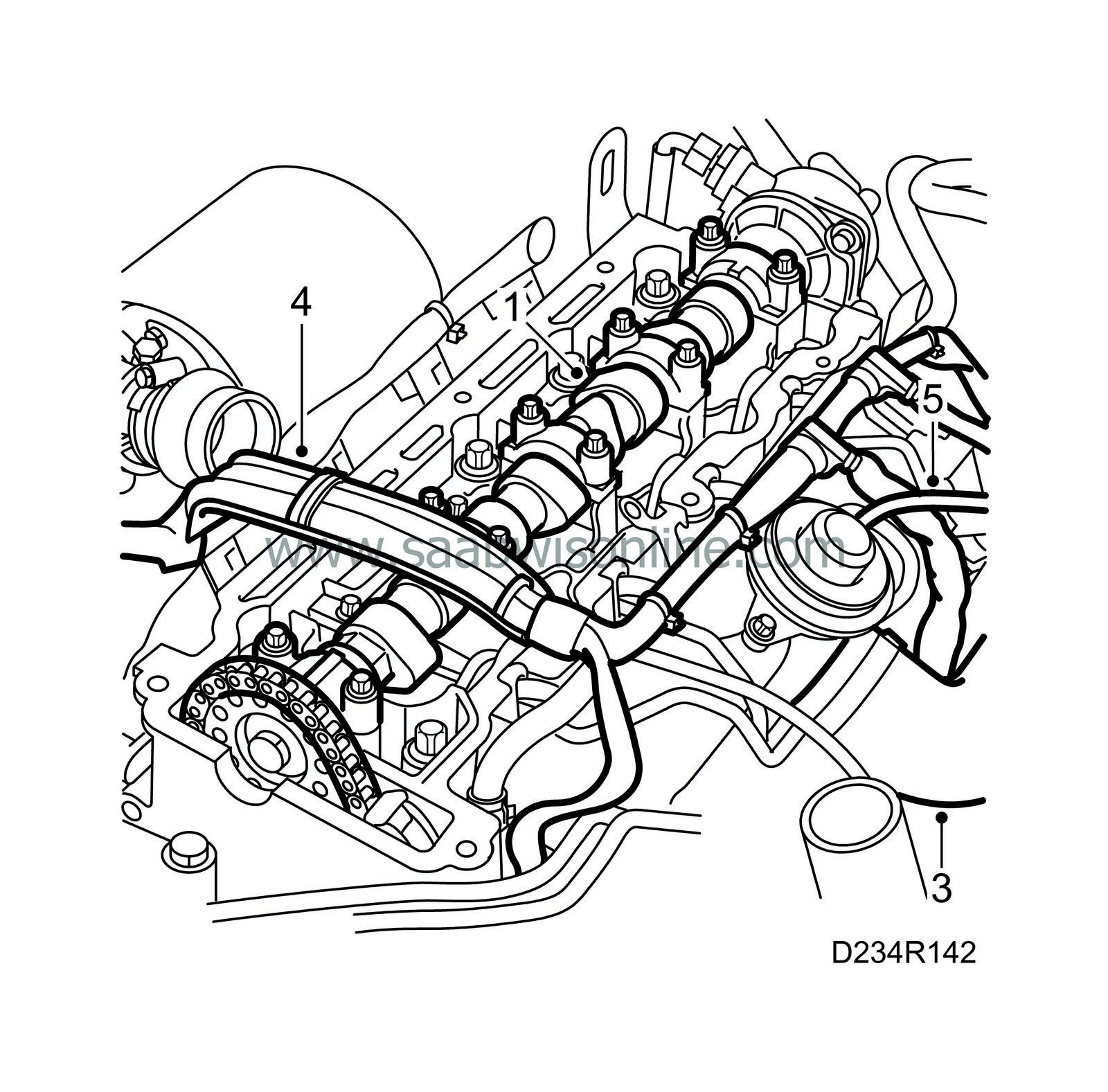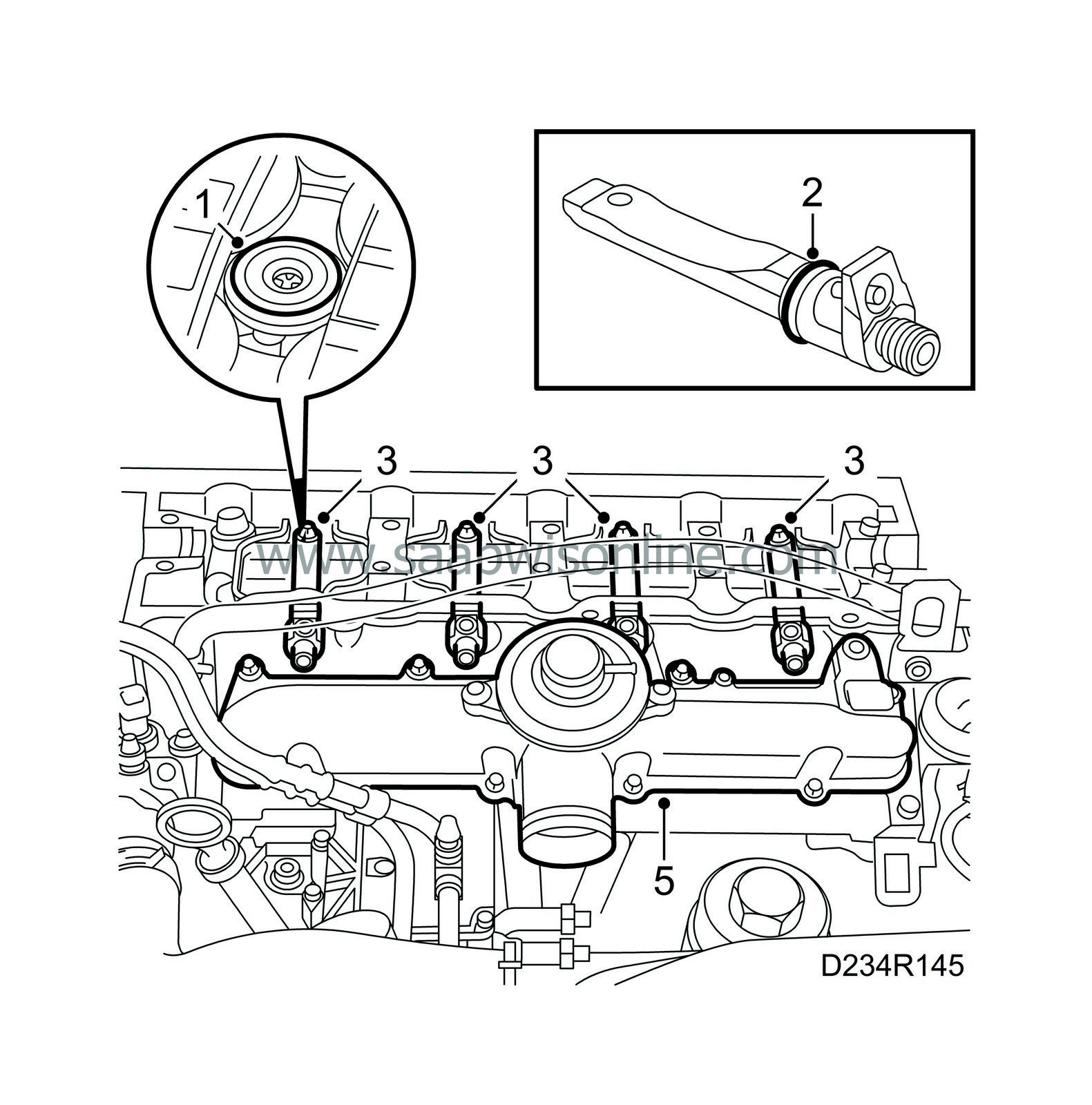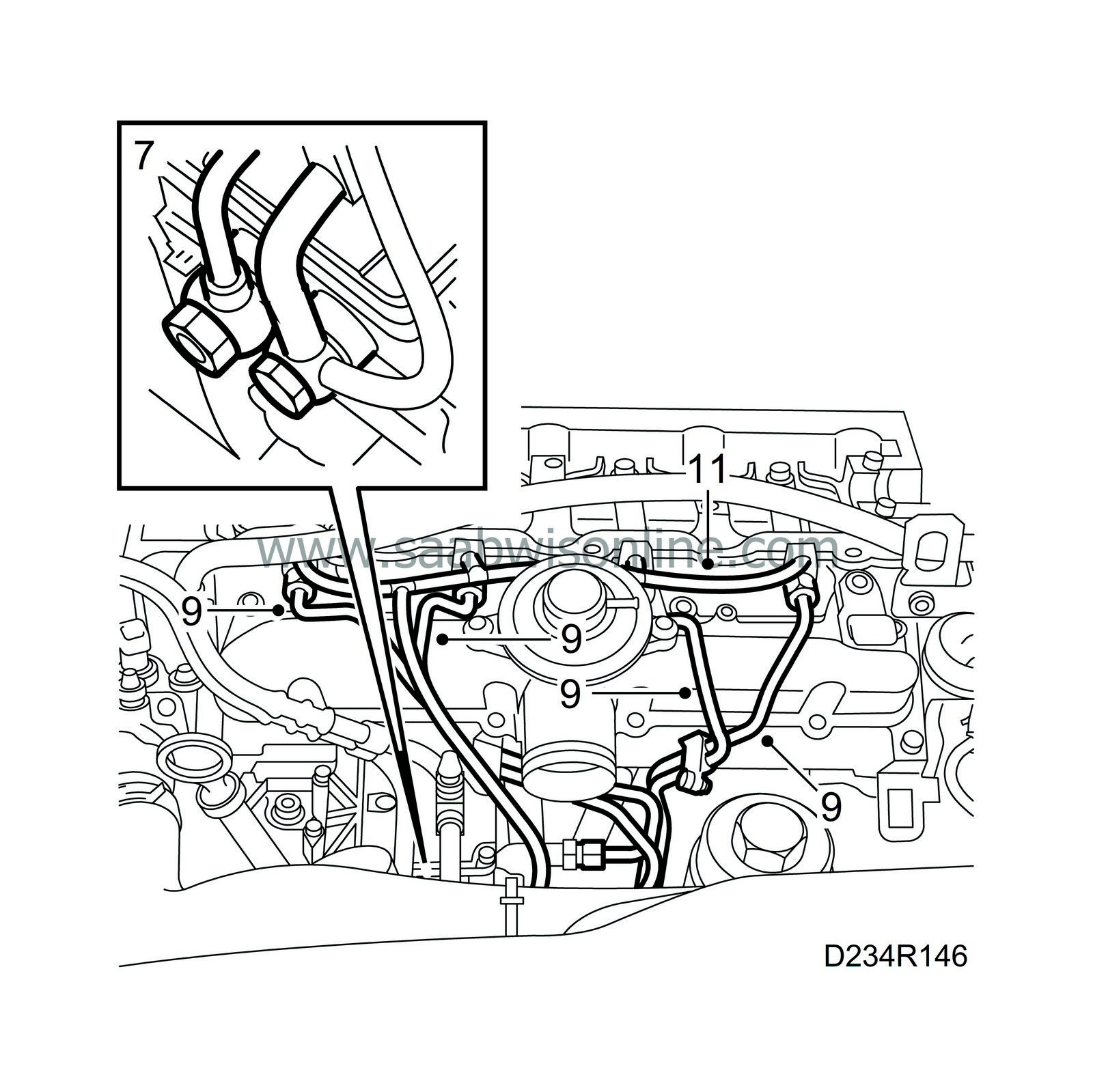Fuel bridge
| Fuel bridge |
| To remove |
|
|||||||
| • |
Make provision for good ventilation! If approved ventilation for extracting fuel fumes is available then it must be used.
|
|
| • |
Use protective gloves! Prolonged contact with fuel may irritate the skin.
|
|
| • |
Keep a class BE fire extinguisher close at hand! Watch out for sparks, e.g. in connection with breaking electric circuits, short-circuits, etc.
|
|
| • |
Smoking is absolutely forbidden.
|
|
| 1. |
Remove the camshaft, see 2. Basic Engine, Adjustment/replacement, Camshaft
 .
.

|
|
| 2. |
Suck up the oil on top of the cylinder head.
|
|
| 3. |
Detach the air hose from the intake manifold, bend it to one side and plug it.
|
|
| 4. |
Unplug all the cables connected to the wiring harness channel and cut the securing points. Remove the channel from the cylinder head and lay it over the engine.
|
|
| 5. |
Pull off the vacuum hose from the EGR valve.
|
|
| 6. |
Note the position of the fuel rails and their clips and mark them.

|
|
| 7. |
Remove the fuel return hoses from the cylinder head.
|
|
| 8. |
Remove the fuel rails (remove the clips if necessary).
|
|
| 9. |
Slightly loosen the fuel line connections on the fuel pump.
|
|
| 10. |
Remove the upper part of the intake manifold and seal the passageways.

|
|
| 11. |
Remove the retaining screws for the fuel bridges, lift the fuel bridges and pull them out of the cylinder head.
|
|
| 12. |
Remove the seals on the injector connections in the cylinder head.
|
|
| To fit |

| 1. |
Blow out the holes for the fuel bridge retaining bolts. Fit new O-rings on the fuel bridges, lubricate the O-rings with non-acidic vaseline and carefully slide the fuel bridges into the cylinder head.
|
|
| 2. |
Fit new O-rings to the fuel bridges, lubricate the O-rings with acid-free vaseline and push the fuel bridges into the cylinder head.
|
|
| 3. |
Tighten the fuel bridge bolts.
Tightening torque 5 Nm + 360° (4 lbf ft + 360°) |
|
| 4. |
Clean the sealing surfaces.
|
|
| 5. |
Fit a new gasket to the lower part of the intake manifold and fit the upper part.
Tightening torque 10 Nm (7 lbf ft). |
|
| 6. |
Fit the pressure sensor and EGR valve if the intake manifold has been changed.
|
|
| 7. |
Tighten the fuel lines to the fuel pump.

Tightening torque 25 Nm (18.5 lbf ft). |
|
| 8. |
Check the fuel rail connecting cones and replace them if necessary.
|
|
| 9. |
Connect the fuel rails with clips in their original positions.
Tightening torque 25 Nm (18.5 lbf ft). |
|
| 10. |
Check the condition of the fuel return hoses and joints and replace as necessary.
|
|
| 11. |
Connect the fuel return hoses to the fuel bridges. Detach the fuel return hose from the fuel pump and connect the hose to pressure/vacuum pump 30 14 883. Pump up a vacuum of 750 mbar and wait 1 minute. Check that the pointer on the tool has not moved.
If a leak is found, the fuel bridges must be examined individually. Connect the pressure/vacuum pump to the return fuel connection (not to the return hose) on each fuel bridge. If the fuel bridges are OK, check the return fuel hoses and T-pieces. The hoses should be pliable and exhibit no cracks or other damage. If there are signs of leakage, change all fuel return hoses and T-pieces. If there is leakage in the fuel bridge, remove it, change the seal and refit the bridge. Check for leakage once again. |
|
| 12. |
Connect the vacuum hose to the EGR valve.

|
|
| 13. |
Fit the wiring harness channel to the engine.
|
|
| 14. |
Secure the wiring harness as it was previously.
|
|
| 15. |
Refit the hose to the intake manifold.
|
|
| 16. |
Fit the camshaft. See
Camshaft
.
|
|

 Warning
Warning

